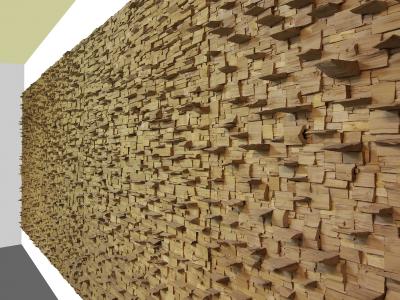Jan de Weryha-Wysoczański
Mediathek Sorted






































































































At the end of 2005, de Weryha was forced to give up his Harburg studio because the city of Hamburg had new plans for the historic buildings. At the beginning of the year he therefore decided to send his collection of works, which had grown to over fifty objects, to Poland, where he had received numerous invitations to exhibit. After 24 years absence as an artist he was able to present extensive solo exhibitions in the Patio Art Gallery (Patio Galeria Sztuki) in Łódź, in the Galeria Szyb Wilson/Shaft Wilson Gallery in Katowice and in 2006 in the Centrum Rzeźby Polskiej w Orońsku/Centre for Polish Sculpture in Orońsko, for each of which catalogues were published. They were followed by a solo exhibition at the municipal Galeria BWA (Biuro wystaw artystycznych) in Jelenia Góra and a presentation of numerous works at the XVth International Sculpture Triennial in Poznań. These exhibitions were so successful that in 2008, 2011 and 2014 three master's theses on the artist and his work were written at the art faculties in Rzeszów and Radom, all of which made close reference to the public presentations.
Meanwhile de Weryha had received an offer from the public authorities in Hamburg to take over the former warehouse of a museum in the Bergedorf district of the city, where the artist and his family had lived since their move from Poland. At the beginning of 2007 he opened his gallery cum studio in the four hundred square metre two-storey building, both as a working area and somewhere to display his works on a permanent basis. Until 2008 he presented around seventy works there under the title 'Holz-Archiv'; and between 2009 and 2012 he presented the collection that was shown in 2009 under the title 'Tabularium' in the Municipal Gallery in Gdansk (Gdańska Galeria Miejska). In 2012 he was commissioned by the Hamburg district of Bergedorf to create the memorial at Bergedorf's Schleusengraben (lit: sluice ditch), which commemorates the thousands of forced labourers from all parts of Europe who had been employed by the National Socialists in industrial enterprises to ensure wartime production in Bergedorf and the surrounding area (ill. 72a-c). A permanent exhibition, the de Weryha Collection, has been on view in the gallery studio since 2013. To date the collection has grown to over 230 works. The museum rooms (ill.94-97) are regularly open to the public. A supporting association, the Freundeskreis de Weryha Sammlung e.V., organises Land Art workshops and artistic trips with the artist, is responsible for concerts in the Collection and looks after its long-term preservation.[25] Since 1988 the artist has participated in numerous group exhibitions in Germany and Poland, as well as showing his works in the USA, Luxembourg, Switzerland, Belgium and England.
In 2005 Wojciechowski also identified an ecological component in de Weryha's work. His objects are "not conceptual figures, not purely conceptual statements"; geometry plays a "serving role [...] thanks to which 'nature' can express itself more clearly. And perhaps they are a way to encourage 'nature' to speak and to reveal its own characteristics, which are invisible in the conventional sense".[26] In an interview with Mariusz Knorowski in 2006, de Weryha added: "There was a good reason for me to choose wood as the material for my work. It is a product of nature that begins a new life, so to speak, after its physical death. It has a smell and changes colour, it swells and dries out. The power of this material dominated my thoughts completely and has inspired me to remain faithful to it, despite the seemingly more topical multimedia techniques that are available today".[27]
Twelve years later, in 2018, the diversity of artistic techniques and expressive possibilities worldwide has become so great that there is no longer any opposition or competition between classical sculpture, possibly ecologically-inspired art, electronically produced works or completely different approaches. Today "multimedia" at art colleges and academies means working with all conceivable materials. In this increasingly diverse world, de Weryha's work, which is steeped in numerous traditions, still offers a self-contained picture and is also topical in relation to today's ecological debates, occupies a unique artistic position of outstanding quality.
Axel Feuß, April 2018
[25] http://freunde-de-weryha.de/
[26] Jan Stanisław Wojciechowski 2005, p. 6 f./10 f. (see further reading; text available online verfügbar on the website of the artist, polish, page 4/english, page 4)
[27] Jan de Weryha in an interview „Offenbarungen in Holz“ with Mariusz Knorowski 2006 (exhibition catalog Jan de Weryha-Wysoczański. Objawienia w drewnie, Orońsko 2006, page 3/7)





















































































